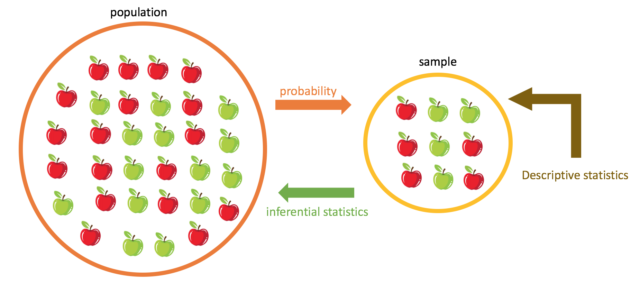Two Big Practical Statistics
By: Nunung Nurul Qomariyah, Ph.D
When is an Observation Meaningful? Statisticians are largely concerned with whether observations on data are significant. Sufficiently strong correlations on large data sets may seem “obviously” significant, but often the effects are more subtle. Statistics remove the bias and make the significancy terms more scientific. We often need evidence based on the data and experiment to conclude something. We need practical statistics to judge the significance of an event.
There are two big practical statistics that can help us in this kind of situations, they are:
(1) Descriptive
- When we are just describing or exploring the observed sample data, we are doing descriptive statistics.
- Whatever we saw in the data, we describe it into some particular visualization and metrics (i.e. scatterplot, pie chart, mean, standard deviation, variance, etc.)
(2) Inferential
- We can tell about something unobserved in the wider population
- We have limited access to our population, that’s why we sampled from the population.
- From this small set of sample, we can conduct an experiment to tell what is happening with the population
- If we took another sample or did another experiment and based our conclusion solely on the observed sample data, we may even end up drawing a different conclusion.
- The purpose is to estimate this sample to sample variation or uncertainty.
- Some methods of inferential satistics include Estimating Mean of Population, T-Test, Z-Test, Chi-Square Test, etc.
References:
http://www3.cs.stonybrook.edu/~skiena/data-manual/lectures/


